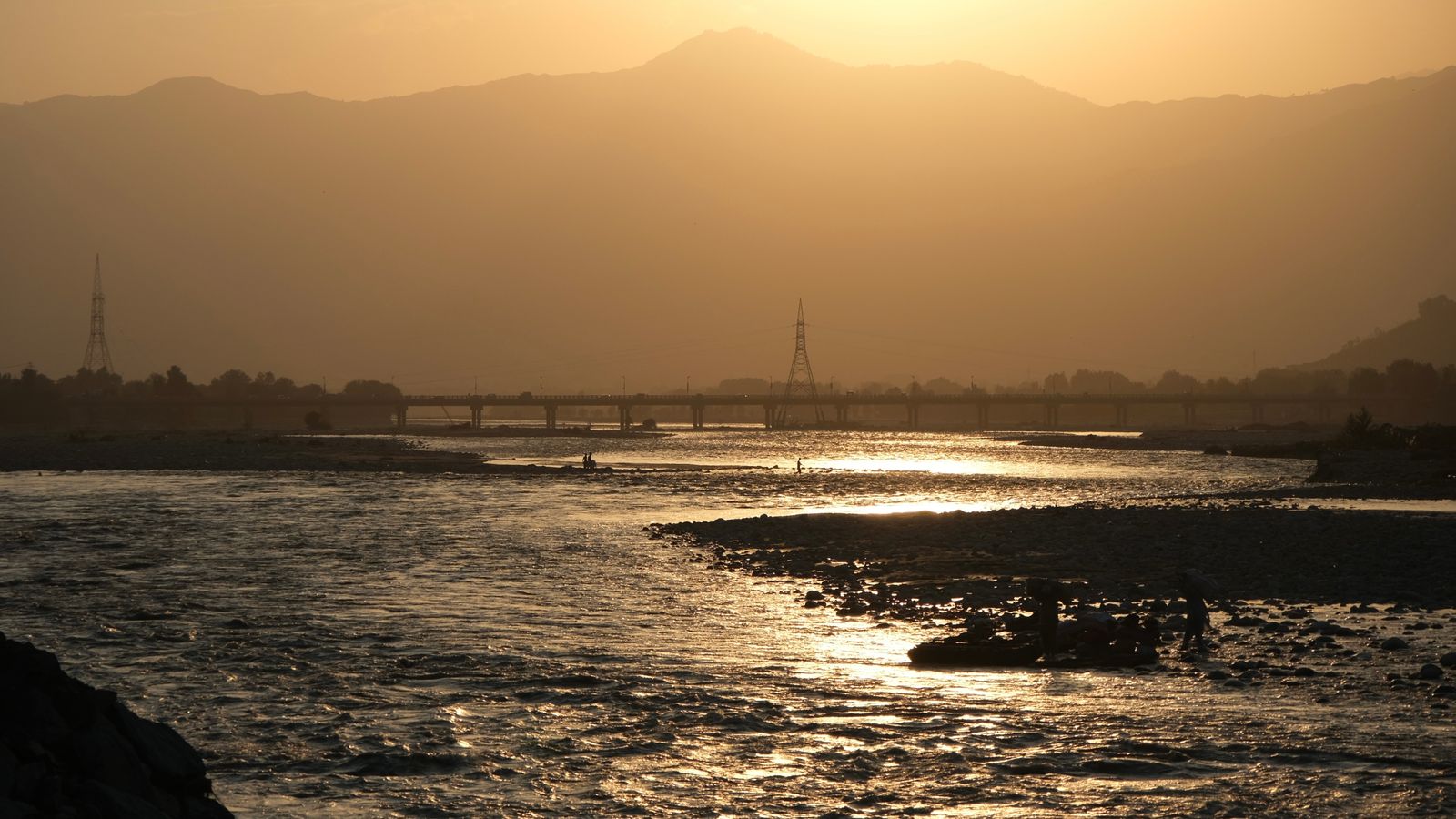I’ve been to the Swat Valley before, it’s one of Pakistan’s most beautiful areas.
Indeed, it’s known as the Switzerland of Pakistan, famous for its clear flowing river, magnificent mountains and delicious peaches and plums.
Swat Valley as a tourist destination is jam-packed with hotels and restaurants – or rather, it was.
Even as we entered the valley, we passed mudslides that had closed part of the main motorway into the region and we could see the flood plains of the Swat glistening in the distance.
Restaurants and guest houses over 30ft above the normal waters are battered or even washed away.
The surviving businesses are caked in thick swathes of feet-deep mud.
Everywhere in the lower part of the valley, people are trying to clean up what has been left behind.
Pakistan floods: UK charities launch DEC appeal ‘to save lives’ as six million in dire need
Pakistan floods: ‘The climate catastrophe of the decade’
‘Nobody cares about us’: Death and despair as Pakistanis flee homes amid devastating floods
A car garage owner showed me his business, set well back from the banks of the river.
“It was filled to the roof with water,” he told me. “Now we are clearing out the mud and trying to mend the cars that were left inside.”
Battered buildings re-emerge from torrents
He, like many others, had moved from the most endangered areas as news spread that floodwaters were surging further upstream.
Heading north, we saw men in self-made rafts battling the torrent.
They were paddling to higher ground, carrying whatever they could salvage.
The once clear waters of the Swat River are now filthy grey.
We watched as people crossed the river at its lowest and safest points, gathering their precious finds, and young boys scampered along the newly-formed banks of the river.
It struck me that the land that would’ve been in front of them has been washed away.
Others carted possessions along the river’s edge in wheelbarrows passing battered buildings that have re-emerged from the torrents that engulfed them to their rooftops.
Local man ‘hasn’t seen this level of flooding before, not even in 2010’
We watched as a lone truck with a large USAID logo on the side was directed towards the riverbank and dumped mud they had cleared from flooded houses and businesses back into the river.
Also watching were a group of men, who a week would have been underwater.
Now they come to the river’s edge to just stare and think about what’s happened to this famous tourist destination and their livelihoods.
“There was flooding in 2010, but not as bad as this,” one of them told me. The crowd starting to gather agrees.
“We haven’t seen this level of flooding before, not even in 2010,” another man adds.
The government of Pakistan blames climate change, and those here agree that the weather is unusual, and things have been changing for some time.
“It’s very different, very different,” a younger man said.
Pointing to an older friend he added: “Compared to before, the climate is changing, but he’s older, ask him…”
The older man nodded and gestured in agreement.
“This is the second time the floods have come, but this one was far more dangerous, it destroyed everything, previously we had floods but never like this.”
Subscribe for free to the Daily podcast on Apple Podcasts, Google Podcasts, Spotify, and Spreaker
Read More:
‘Nobody cares about us’: Death and despair as Pakistanis flee homes amid devastating floods
Satellite images and maps show scale of disaster
Brave and resilient displaced people
There’s nothing unusual about monsoon rains in Pakistan, but this time they have been life changing and deadly – and this season isn’t over yet.
I asked the men if a repeat of the heavy rains in the mountains could bring even more tragedy for them, and for the country.
They all nodded, with one simply replying: “We are scared.”






